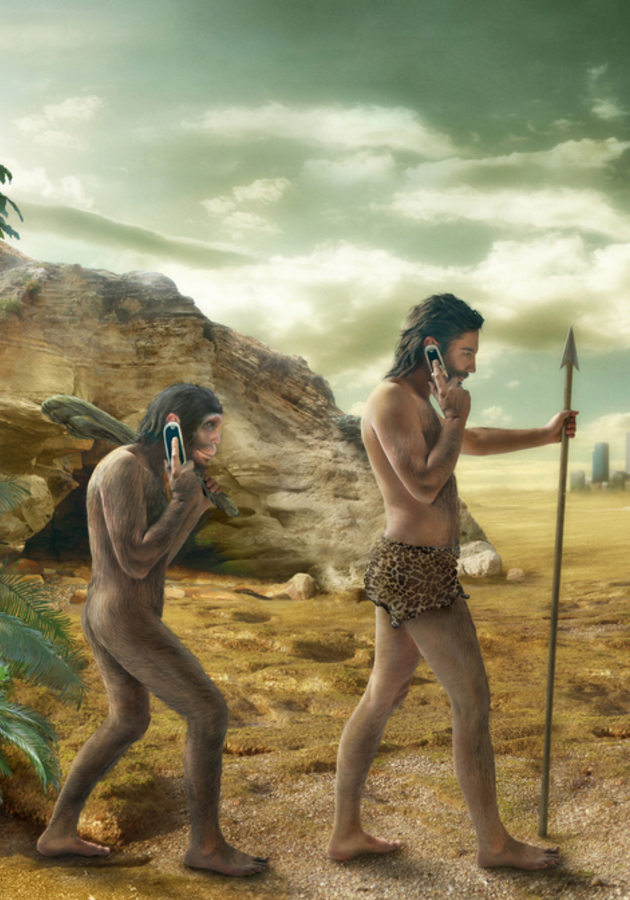Have you ever wondered why people fall in love? Or why people see the world in different ways? In “How the Mind Works,” Steven Pinker combines new research into the workings of the mind from various disciplines. He looks at why the brain and mind developed as they did, and how they work. From vision to emotion, intelligence to social structures – get ready to discover how your mind works!
The mind
Imagine you were tasked to program a robot to act and think like a human. How would you go about it? Even to get the robot to see like the human eye does would present you with insurmountable barriers. Even if you could somehow manage to do that, however, how would you make a robot think? Or reason? Let alone love?
To understand how all this would work, we need to look to the human mind – and the place where it is situated, the brain. The mind is what the brain does. But how? Pinker suggests the computational theory of mind: “The mind is a system of organs of computation, designed by natural selection to solve the kinds of problems our ancestors faced in their foraging way of life, in particular, understanding, and outmaneuvering objects, animals, plants, and other people.”
In that sense, the human mind is pretty similar to that of a robot. It processes information through the connections between neurons. The mind sees information as a configuration of symbols: by connecting these to other symbols in the mind or to those neurons that control the muscles, behavior is created.
If you think about it, it is really incredible what the human mind can do. Just take a telephone call, for example. The message stays the same, even as it leaves your mouth as vibrating air, is then physically transformed into electricity in a wire to charges in silicon, to flickering light in a fiber optic cable, and finally to electromagnetic waves - and then back again in reverse order. The other person’s brain then processes this information in the form of chemicals diffusing across synapses and firing neurons.
Moreover, all the things we think, feel, and do at this point in history were created through evolution. Through reverse-engineering it is possible to trace why the mind works in the way it does now.
Vision
Our vision is a great example of the miracle of the human mind. Let us start with the basics. When looking at an object, the eye discerns between dark and light patches of light. Somehow, our brain computes these patches of light so that we see them in shapes, arranged in space, and in different colours.
We know how far an object is away and what it is. This is quite amazing since our retinal vision is two-dimensional – but again, somehow the brain manages to transfer this into a three-dimensional image.
However, our mind is not just one giant supercomputer, it is made up of many mental modules. Just like our physical organs all have their own specific task to accomplish, such as the heart pumping blood, so do our mental organs have one specific task that they are required to do.
In the field of vision for example, we have the surface-perception module which perceives the properties of surfaces. Imagine a lump of coal and a ball of snow. You would think that the lump of coal would look black to the human eye, while the ball of snow would look white. In fact, they do not, depending on the surrounding brightness.
The fact that they always look black or white to us - no matter how bright the surroundings are - comes down to information supplemented by the brain. The surface-perception module calculates the brightness of the surroundings and, based on that, displays the ball of snow as white and the lump of coal as black. Our brains are used to seeing everything in terms of earthly viewing conditions.
If we were to be transported to a different planet, however, where the light is not distributed evenly, but cunningly arranged as a patchwork, we would be seeing objects that are not there. In fact, this happens every time you watch TV! You are staring at a shimmering piece of glass, yet our brains have adapted so well to the viewing conditions on Earth that we think we see real people and places. This has become so etched into our mental programme that even if you were to spend your entire life as a couch potato, your brain would not be able to see through the trick.
What is intelligence?
Human beings are different from other species on earth because we are intelligent beings. But what exactly is intelligence? According to Pinker, it is “the ability to attain goals in the face of obstacles by means of decisions based on rational (truth-obeying) rules.”
Intelligence is based on information, and processing information is the fundamental activity of the brain. So how do we humans make sense of the world around us?
One way in which the brain stores information is by categorizing it. Organizing information into categories brings order into the mental chaos. By ordering January, February, and December into the category “months,” or by organizing Africa, Asia, and Europe into “continents” we can make sense of the daily load of information that the brain is confronted with.
More importantly, categorizing allows us to infer. We cannot know everything about every object, but we can predict properties with the help of categories. As an example: Mopsy has long ears, so he is a rabbit. This means he likes carrots and can jump. If we only knew that Mopsy was a mammal, we could make very few predictions about what Mopsy is or does.
The categories in our brain are neither too specific nor too broad. We would neither immediately sort Mopsy into the category “mammal” nor would we immediately identify him as a cottontail rabbit. Similarly, we see a chair, and not “furniture” or “Barcalounger.” This is what psychologist Eleanor Rosch calls basic-level categories - the first mental label we assign to objects.
All human brains work in similar ways. So you are not that different from people like Mozart or Einstein! In fact, Pinker writes: “The genius creates good ideas because we all create good ideas; that is what our combinatorial, adapted minds are for.”
Emotions
Another puzzling and complex property of the human mind are emotions. Interestingly, emotional worlds are the same for all humans. Just as the human brain works in the same way, no matter where you are from, so do we all experience the same emotions: happiness, sadness, anger, fear, disgust, and surprise.
Charles Darwin already observed this when he said: “The same state of mind is expressed throughout the world with remarkable uniformity; and this fact is in itself interesting as evidence of the close similarity in bodily structure and mental disposition of all the races of mankind.”
What is more, even the facial expressions corresponding to emotional states are the same around the world. This was demonstrated in an experiment conducted by the psychologist Paul Ekman in the 1960s. He showed photos of people expressing different emotions to people around the world, even the isolated Fore foragers of Papua New Guinea. Everyone recognized the facial expressions as belonging to the corresponding emotion.
But why do we have emotions in the first place? Emotions such as fear can be easily explained from an evolutionary standpoint. If our ancestors encountered a dangerous animal, such as a bear, fear would make them run away. But what about more complicated emotions such as jealousy or envy?
Emotions have actually evolved to help us prioritize our actions. With emotions, the brain can set its highest-level goals. Once these are triggered, the emotion triggers subgoals, which for us include thinking and acting. As Pinker writes, “Each human emotion mobilizes the mind and body to meet one of the challenges of living and reproducing in the cognitive niche.”
Another interesting emotion to look at is disgust. It can seem quite useless as an emotion nowadays, but in World War II American pilots in the Pacific refused to eat toads and bugs they were told were perfectly safe, and went hungry instead.
However, historically speaking, disgust was an emotion developed to stop humans from ingesting dangerous animal stuff. And since it is an emotion, no amount of reassurance or education on something disgusting being edible can turn this feeling around.
Falling in love
Arguably one of the most complicated, yet most compelling emotions is falling in love. It can turn rational thinking human beings into irrational fools. It seems nonsensical that the emotion of love exists solely for the purpose of procreation.
And, in fact, it is a bit more complicated than that. We all look for the kindest, funniest, best looking person out there to spend our lives with and have children with. But, obviously, there are a lot of people out there and only one perfect partner. It is like trying to find a needle in a haystack. So eventually, most people settle for the best option that presents itself.
Years later, however, you might still meet the perfect partner. What is to stop you from leaving your current partner and running off with the 10-out-of-10 next door? That is where romantic love comes in, according to economist Robert Frank. After all, love is an emotion that none of us can control. We are with the person we love because of this emotion, and it is an emotion that cannot simply be switched off or on. It is the best safeguard against being left for the better option.
According to Pinker, there are two parts of romantic love: “setting a minimal standard for candidates in the mate market, and capriciously committing body and soul to one of them.”
So what about non-romantic love? You have probably heard about “a brotherhood of man” or “the mother country” or “father figure.” These phrases imply that the love between kin is more powerful than the love between non-relatives. Humans are obsessed with kinship and genealogy. When we meet others, this is one of the first things we try to find out: who they grew up with, who resembles whom and how people in their family interact with one another.
Once we know we are related to someone, we feel a bond with them and feelings of solidarity, sympathy and trust begin to form. This can also be explained in evolutionary terms. Since siblings share similar genes, loving and protecting one another preserves these genes in the genepool.
Final Notes
The human mind is like a computer: by adding together information from various sources, a complete image is created. Combining information on shape, space, and brightness, for example, creates our vision. By quickly categorizing objects around us we can infer information about them.
The way our mind works and the emotions and actions it creates can be explained in evolutionary terms. Categorizing information brings order into the mental chaos, while emotions help us move toward our goals.
12min Tip
If you think you cannot achieve the same things as Einstein or Mozart did, think again – your brain works exactly like theirs!





























